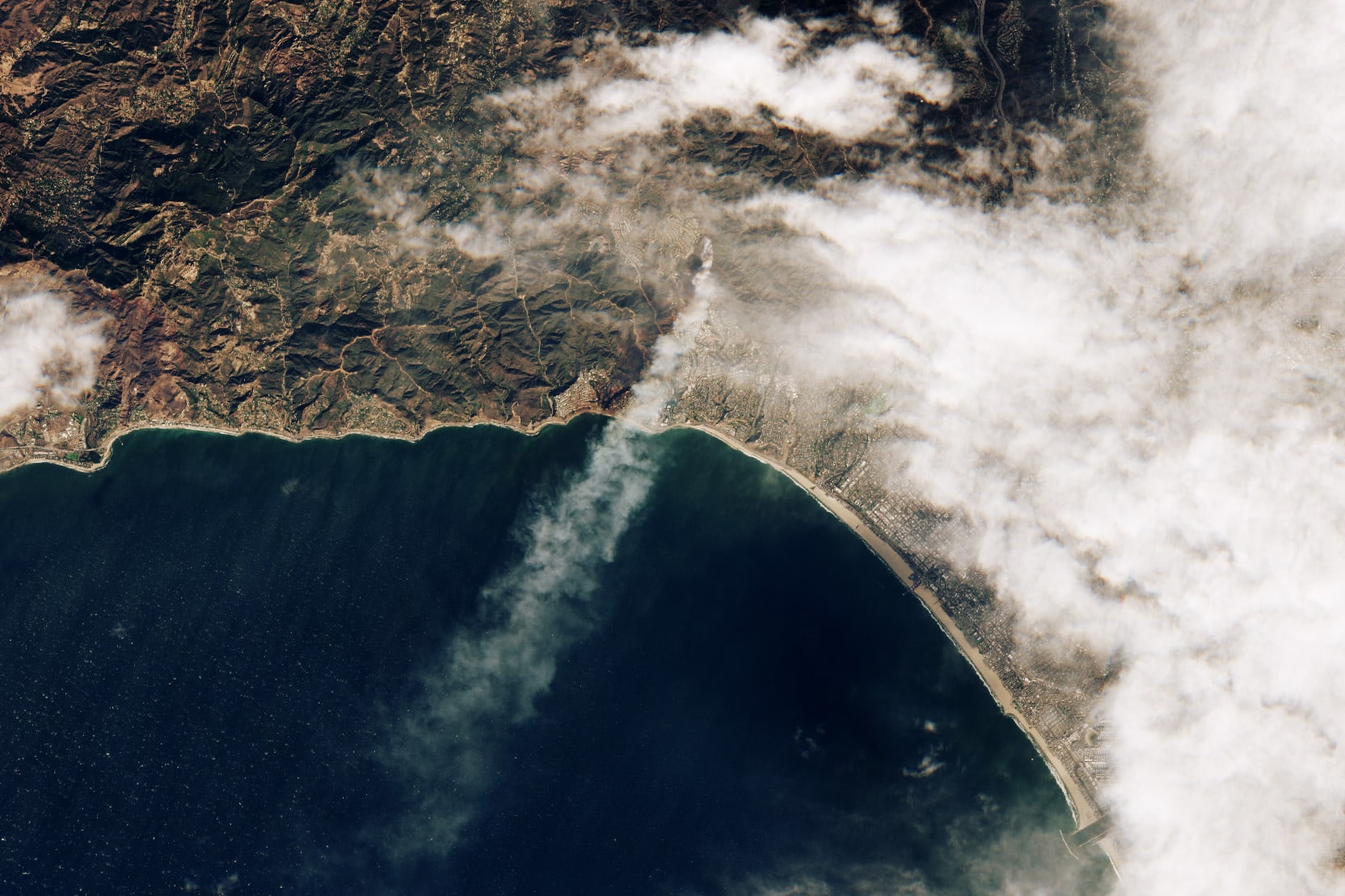
Reagan & Gorbachev Signed the INF Treaty to Ban Certain Nukes On This Date
What do you think of the INF Treaty on its anniversary?
On December 8, 1987, President Ronald Reagan and Soviet Secretary General Mikhail Gorbachev signed the Intermediate-Range Nuclear Forces Treaty (INF Treaty) and eliminated all short- and intermediate-range nuclear and conventional missiles.
In 2019, the U.S. withdrew from the INF Treaty because of alleged violations by Russia and the missile development activities of non-signatory nations like China and Iran.
Why did it come up?
In 1977, the Soviet Union deployed a mobile, concealable intermediate-range ballistic missile capable of carrying three nuclear warheads known as the SS-20 Saber in its European territories. While the missile’s range was limited enough that it didn’t qualify as an intercontinental ballistic missile (ICBM) under the SALT II arms control agreement, it posed a significant threat to Europe.
Germany and other Western European nations pressed the U.S. for a response, and in 1979 NATO made what became known as the “Double Track Decision”:
- On the first track, 1,000 nuclear warheads would be removed from Europe while the U.S. negotiated with the Soviet Union on limiting intermediate-range nuclear warheads.
- If the negotiations failed, NATO would take the second track and modernize its own arsenal of intermediate-range nuclear warheads and deploy them beginning in 1983 to West Germany, Belgium, Italy, the Netherlands, and the United Kingdom.
Before formal negotiations began in 1981 President Reagan proposed the Zero Option to then-Soviet leader Leonid Brezhnev, which would’ve eliminated intermediate nuclear weapons on both sides of the Cold War divide. Reagan also proposed a broader, overarching nuclear arms reduction treaty known as START in 1982, and in 1983 advocated for the Strategic Defense Initiative (SDI) ― the missile defense system referred to as “Star Wars”.
Over several rounds of talks in 1982 and 1983, the Zero Option broadened to include equal rights and limits on U.S. and Soviet missiles. But a deal wasn’t reached, and American Pershing intermediate-range missiles were deployed to West Germany in November 1983 ― prompting Soviet negotiators to walk out.
Negotiations resumed in 1985 after British Prime Minister Margaret Thatcher helped broker talks between the U.S. and new Soviet leader Mikhail Gorbachev. At the 1986 Reykjavik Summit, Reagan and Gorbachev nearly reached an unexpected breakthrough agreement to eliminate all nuclear weapons, but Reagan refused to confine SDI to laboratory research and that deal went by the wayside, although negotiations on INF Treaty continued.
In 1987 negotiations progressed to the extent that in August, West German Chancellor Helmut Kohl removed the Pershing missiles after previously opposing such a move out of fear it’d expose West Germany to an attack by the Soviet-backed Warsaw Pact.
What did it do?
The final INF Treaty text was agreed to in September 1987 and largely embodied President Reagan’s “disarmingly simple” Zero Option he’d proposed in 1981:
- The INF Treaty set a deadline of June 1, 1991 for the U.S. and Soviet Union to eliminate all of their ground-launched nuclear and conventional missiles (plus their launchers) with ranges between 310 and 3,420 miles.
- After that date, each side was to conduct on-site verification inspections of the other’s INF facilities for a 10-year period, while the ban on weapons carried on indefinitely.
At the signing ceremony with General Secretary Gorbachev on December 8. 1987, Reagan said:
“The numbers alone demonstrate the value of this agreement. On the Soviet side, over 1,500 deployed warheads will be removed, and all ground-launched intermediate-range missiles, including the SS-20's, will be destroyed. On our side, our entire complement of Pershing II and ground-launched cruise missiles, with some 400 deployed warheads, will all be destroyed. Additional backup missiles on both sides will also be destroyed.
But the importance of this treaty transcends numbers. We have listened to the wisdom in an old Russian maxim. And I'm sure you're familiar with it, Mr. General Secretary, though my pronunciation may give you difficulty. The maxim is: Dovorey no provorey — trust, but verify.”
Secretary General Gorbachev added:
“We can be proud of planting this sapling, which may one day grow into a mighty tree of peace. But it is probably too early to bestow laurels upon each other. As the great American poet and philosopher Ralph Waldo Emerson said: ‘The reward of a thing done well is to have done it.’”
The treaty was ratified in May 1998 with a 93-5 vote in the Senate and took effect on June 1, 1988.
What has its impact been?
By the end of May 1991, 2,692 intermediate-range missiles were eliminated ― including 846 by the U.S. and 1,846 by the Soviet Union ― and each side carried out inspections of the other’s former missile facilities.
Following the dissolution of the Soviet Union on December 25, 1991, the once-bilateral INF Treaty was broadened into a multilateral treaty that included participating Soviet successor states Belarus, Kazakhstan, Russia, and Ukraine. Another two successor states, Turkmenistan and Uzbekistan, each have only one INF site in their territory so they play a less active role in enforcing the treaty.
Russia began to express regret about the INF Treaty during the administration of George W. Bush and suggested it be abandoned, citing the fact that its non-signatory neighbor China and other non-signatory rivals like India, Iran, and Pakistan are developing intermediate-range ballistic missile capabilities. Most of China's nuclear arsenal would be in violation of the INF Treaty if it were a signatory.
In 2008, Russia started testing the SSC-8 Novator ground-launched cruise missile, which is nuclear-capable and has an estimated range of 1,500 miles ― which would place it within the jurisdiction of the INF Treaty. As testing from fixed and mobile launchers progressed, the Obama administration informed NATO in 2014 that Russia had violated the treaty by developing the missile.
Russia claims the SSC-8 missile is compliant with the INF Treaty and rejected a 2016 U.S. request for a special verification commission to deal with the alleged violation. Russia has also alleged that U.S. missile defense installations in Poland and Romania violate the INF Treaty because they have ground launchers that could support intermediate-range, nuclear capable Tomahawk cruise missiles (the missile as currently designed and produced can only be launched from air or sea).
U.S. defense officials announced in February 2017 that Russia deployed two SSC-8 missile battalions (one to an unknown operational base), each of which has four launchers and an estimated complement of 24 nuclear-capable missiles. The U.S. responded in November 2017 by announcing the commencement of “INF Treaty-compliant research and development by reviewing military concepts and options for conventional, ground-launched, intermediate-range missile systems.”
On December 4, 2018, Secretary of State Mike Pompeo announced that the U.S. would suspend its participation in the INF Treaty in 60 days over Russia’s alleged violation “unless Russia returns to full and verifiable compliance”. Pompeo added that no testing, production, or deployment would occur until after the 60-day window closed. But the following day, Russian President Vladimir Putin responded that if the U.S. abandoned the INF Treaty and developed new intermediate-range nuclear missiles Russia would do the same.
The war of words and uncertain future of the INF Treaty prompted two of the key figures in its formulation ― Mikhail Gorbachev and Reagan administration Secretary of State George Shultz ― two write a joint op-ed in the Washington Post arguing for the treaty’s preservation:
“Over the past few years, relations between major powers have become more complex. There is a danger that the gains achieved in the process of ending the Cold War could be wiped out. Abandoning the INF Treaty would be a step toward a new arms race, undermining strategic stability and increasing the threat of miscalculation or technical failure leading to an immensely destructive war...
The answer to the problems that have come up is not to abandon the INF Treaty but to preserve and fix it. Military and diplomatic officials from the United States and Russia should meet to address and resolve the issues of verification and compliance. Equally difficult problems have been solved in the past once the two sides put their minds to it. We are confident this can be done again.”
In August 2019, the Trump administration followed through with its planned withdrawal from the INF Treaty in response to Russia's development and deployment of a ground-launched, intermediate-range cruise missile. Secretary of State Mike Pompeo said Russia "deliberately violated" the INF Treaty and said its "development and fielding of a treaty-violating missile system represents a direct threat to the United States and our allies and partners." He called on "Russia and China to join us in this opportunity to deliver real security results to our nations and the entire world."
RELATED READING
- Bush & Gorbachev Signed START to Reduce Nuclear Arms
- What Does the End of the INF Treaty Mean for Nuclear Disarmament?
— Eric Revell
(Photo Credit: National Archives / Public Domain)
The Latest
-
 Changes are almost here!It's almost time for Causes bold new look—and a bigger mission. We’ve reimagined the experience to better connect people with read more...
Changes are almost here!It's almost time for Causes bold new look—and a bigger mission. We’ve reimagined the experience to better connect people with read more... -
 The Long Arc: Taking Action in Times of Change“Change does not roll in on the wheels of inevitability, but comes through continuous struggle.” Martin Luther King Jr. Today in read more... Advocacy
The Long Arc: Taking Action in Times of Change“Change does not roll in on the wheels of inevitability, but comes through continuous struggle.” Martin Luther King Jr. Today in read more... Advocacy -
 Thousands Displaced as Climate Change Fuels Wildfire Catastrophe in Los AngelesIt's been a week of unprecedented destruction in Los Angeles. So far the Palisades, Eaton and other fires have burned 35,000 read more... Environment
Thousands Displaced as Climate Change Fuels Wildfire Catastrophe in Los AngelesIt's been a week of unprecedented destruction in Los Angeles. So far the Palisades, Eaton and other fires have burned 35,000 read more... Environment -
 Puberty, Privacy, and PolicyOn December 11, the Montana Supreme Court temporarily blocked SB99 , a law that sought to ban gender-affirming care for read more... Families
Puberty, Privacy, and PolicyOn December 11, the Montana Supreme Court temporarily blocked SB99 , a law that sought to ban gender-affirming care for read more... Families
 Climate & Consumption
Climate & Consumption
 Health & Hunger
Health & Hunger
 Politics & Policy
Politics & Policy
 Safety & Security
Safety & Security
